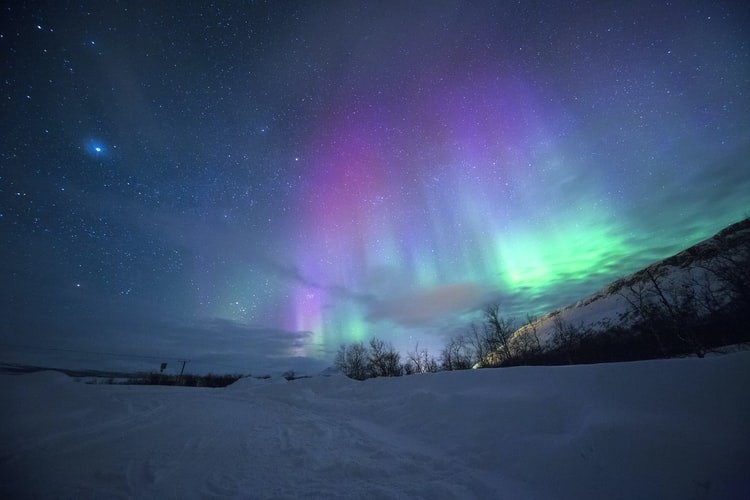
This week, the Earth is under geomagnetic storm watch owing to activity on the sun's surface a few days ago. Some regions of the United States may have even see an aurora.
"Sun-watchers" had already seen heightened activity from the sun before the two solar flares, according to EarthSky. The active area 12860 generated eight C-class solar flares before producing a bigger M4 X-ray flare on Aug. 28 that caused an R1 or small radio blackout on the side of the Earth facing the sun. Later that day, another erupted, and two CMEs are now on their way to Earth.
Geomagnetic Storms
Yesterday, there was a nice filament eruption in the northern hemisphere followed by a jet-like eruption from AR 12860 (south). But no clear signatures were found in coronagraph images. The fast narrow CME may have been too early for the second event. Let me know what you think. pic.twitter.com/GE87Sxbcte
- Halo CME (@halocme) August 30, 2021
A geomagnetic storm is a large disturbance of Earth's magnetosphere that happens when energy from the solar wind is transferred extremely efficiently into the space environment around the planet. Variations in the solar wind cause substantial changes in the currents, plasmas, and fields in Earth's magnetosphere, resulting in these storms.
Sustained (for several to many hours) periods of the high-speed solar wind, and, most importantly, a southward directed solar wind magnetic field (opposite the direction of Earth's field) at the dayside of the magnetosphere are the solar wind conditions that are effective for causing geomagnetic storms. This situation is ideal for transmitting energy from the solar wind to the magnetosphere of the Earth.
Related Article : Solar Tsunami Blast Headed Towards Earth After Sun Emitted C3 Flare
G1 and G2 Storms
G1 and G2 geomagnetic storms are classified as "small" and "moderate," respectively, on the National Oceanic and Atmospheric Administration's (NOAA) space weather scales. Although they are on the lower end of the spectrum, they can have impacts such as "minimal influence on satellite operations" and "voltage warnings" in high-latitude power systems.
"At this and greater altitudes, migratory animals are affected," the organization stated, adding that auroras may also be visible at higher latitudes, such as in Maine and northern Michigan.
CME Blasts

A pair of coronal mass ejections (CMEs), which are blasts of the superheated plasma thrown into space by explosions above the sun's surface, might be responsible for the show. They're not the same as solar flares, which eject energetic particles that move at the speed of light, although they frequently occur alongside bursts.
According to SpaceWeather.com, folks "as far south" as New York and Idaho may see auroras during the event.
"Storms like this do not affect electrical grids or satellites," according to the source. "At high latitudes, though, they may generate magnificent auroras." Thus, a light display is conceivable in Scandinavia, Iceland, Canada, and even certain northern US states.
Seeing Auroras in the US

The Denali National Park and Preserve in Alaska, the Idaho Panhandle National Forest, and Michigan's Upper Peninsula are among the United States where individuals might have seen the auroras.
When all of that stuff collides with our planet's magnetic field, the consequence may be some spectacular auroras that reach further from the poles than usual towards the equator.
For more cosmic news, don't forget to follow Nature World News!
© 2025 NatureWorldNews.com All rights reserved. Do not reproduce without permission.





